Search
Remove Ads
Advertisement
Summary 
Loading AI-generated summary based on World History Encyclopedia articles ...
Search Results
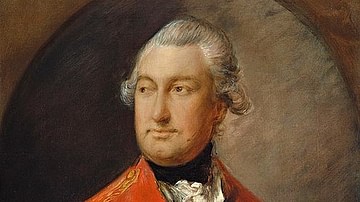
Definition
Charles Cornwallis
Charles Cornwallis (1738-1805), 1st Marquess and 2nd Earl Cornwallis, was a British military officer and statesman best known for surrendering to George Washington at the Siege of Yorktown, the final decisive engagement of the American Revolutionary...
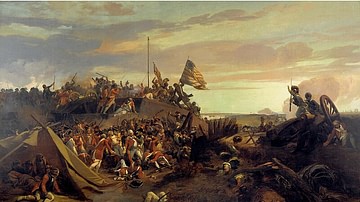
Article
Siege of Yorktown
The Siege of Yorktown (28 September to 19 October 1781) was the final major military operation of the American Revolutionary War (1775-1783). It resulted in the surrender of British general Lord Charles Cornwallis, whose army had been trapped...

Article
Battle of Guilford Court House
The Battle of Guilford Court House (15 March 1781) was one of the last major engagements of the American Revolutionary War (1775-1783). Fought near Greensboro, North Carolina, it was a pyrrhic victory for the British army under Lord Charles...
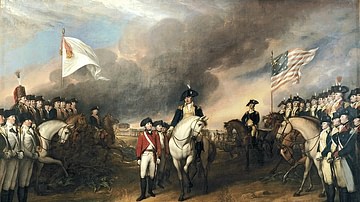
Definition
American Revolutionary War
The American Revolutionary War (1775-1783), or the American War of Independence, was a conflict between Great Britain and its 13 North American colonies, who declared independence as the United States of America. Initially a rebellion within...
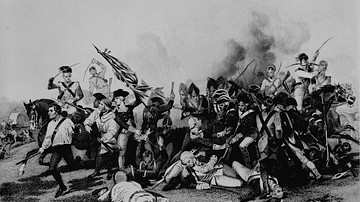
Article
Battle of Camden
The Battle of Camden (16 August 1780) was a major battle of the southern theater of the American Revolutionary War (1775-1783). It saw a British army under Lord Charles Cornwallis decisively defeat an American force under General Horatio...
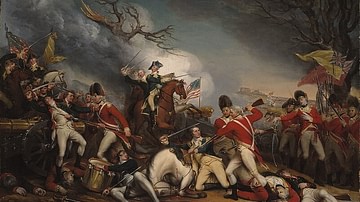
Article
Battle of Princeton
The Battle of Princeton (3 January 1777) was a small, yet significant, battle of the American Revolutionary War (1775-1783) in which the American Continental Army surprised and defeated a British force at Princeton, New Jersey. The battle...

Image
Charles Cornwallis, 1st Marquess Cornwallis
Lord Charles Cornwallis (1738-1805), oil on canvas portrait by Thomas Gainsborough, c. 18th century.
Royal Collection Trust.

Image
The Unicorn Surrenders to a Maiden
"The Unicorn Surrenders to a Maiden" is one of seven tapestries in the "Unicorn Tapestries" group. These allegorical tapestries depict the hunting of a unicorn, a mythological animal common to European folklore. "The Unicorn Surrenders to...
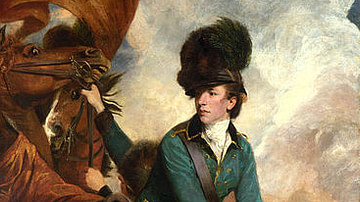
Definition
Banastre Tarleton
Banastre Tarleton (1754-1833) was a British military officer and politician, most famous for his role in the southern campaigns of the American Revolutionary War (1775-1783). In command of an elite unit of Loyalists called the British Legion...

Definition
Nathanael Greene
Nathanael Greene (1742-1786) was a general of the Continental Army during the American Revolutionary War (1775-1783). One of George Washington's most trusted subordinates, Greene served capably as Quartermaster General before leading the...